1 of 17
Download to read offline
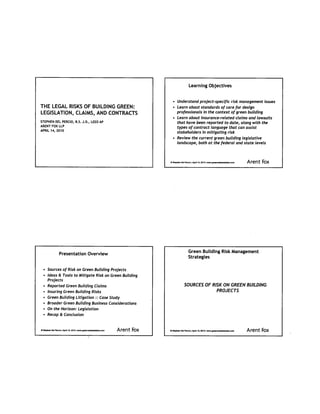


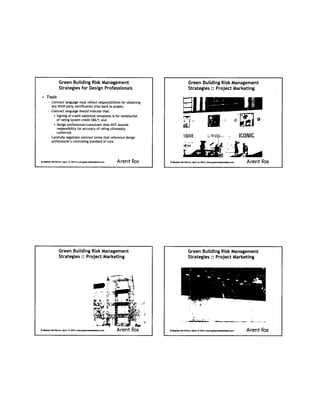

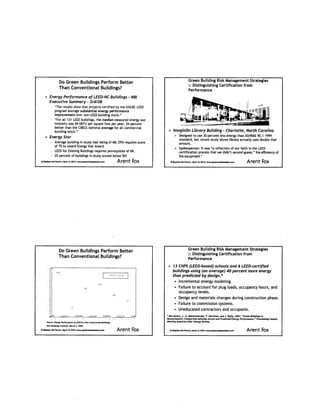
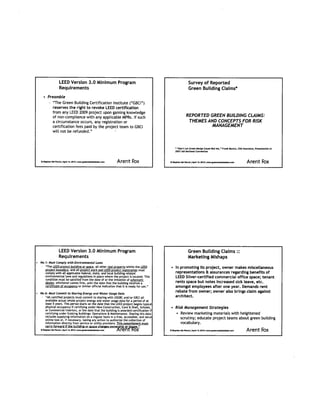
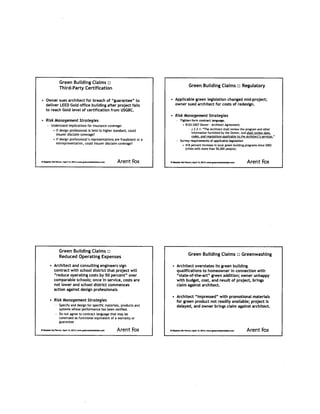

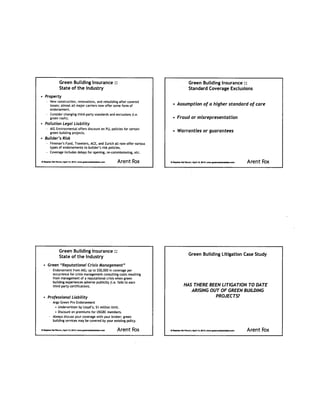

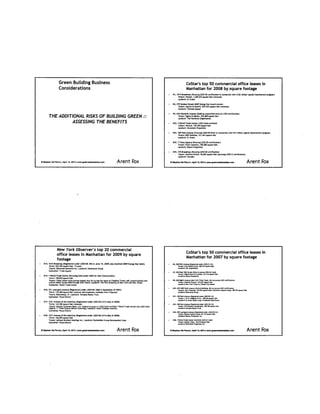

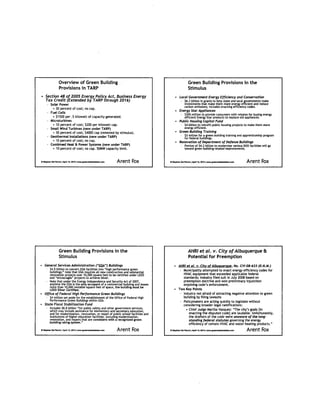

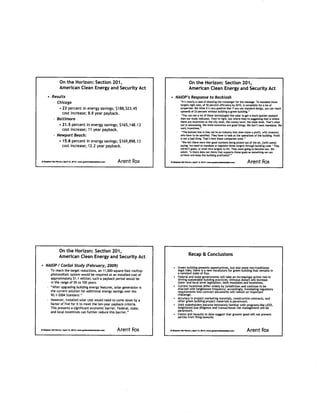
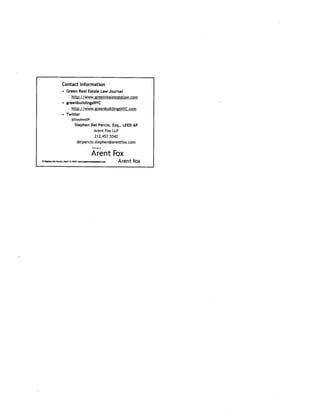
Ad
Recommended
2011 expo-asilp-presentation cgbf
2011 expo-asilp-presentation cgbfEllieNowels
╠²
The document outlines Ohio's alternative stormwater infrastructure loan program, aimed at enhancing community redevelopment through sustainable practices. It details eligibility requirements for applicants, key program offerings, and funding opportunities for projects that improve water quality and mitigate runoff. The process involves several steps including pre-application meetings, application submission, loan review, and eventual project commencement within a specified timeframe.Mode shift for green team
Mode shift for green teamEllieNowels
╠²
The document discusses statistics that show many trips taken by car are short distances that could be biked or walked. It also discusses surveys that found many Americans would like to commute by bike if safer infrastructure was available. The document promotes increasing bicycling for transportation in Columbus, Ohio through education programs, infrastructure improvements, and employer incentives and support. It aims to increase the percentage of workers biking to 2% by 2012.Get green all presentations 2010 final
Get green all presentations 2010 finalEllieNowels
╠²
The document summarizes the proceedings of the 2010 Get Green Business Conference & Green Building Expo. It provides an overview of the event hosts and sponsors. It also summarizes the accomplishments and priorities of the Mayor's Green Team committees for 2009-2010, which focus on areas like green business, building, energy, transportation, and growth/development. Key goals include educating businesses and the community about sustainability initiatives and resources.2011 expo-passive house-designing-lowenergy buildings
2011 expo-passive house-designing-lowenergy buildingsEllieNowels
╠²
The document outlines the principles and standards of passive house design, emphasizing low energy consumption and high comfort levels in buildings. It details various energy-efficient metrics, recommendations for construction, insulation, window performance, and ventilation systems tailored for different climate zones. Additionally, it highlights recent certified passive house projects and provides resources for further learning in sustainable architecture.Gr biz conf mgt update 2010
Gr biz conf mgt update 2010EllieNowels
╠²
The Mayor's Green Team report outlines the progress made in 2009 and sets priorities for 2010 across several committees focused on green business, transportation, energy, and development. Achievements include environmental awards, mobile emissions reduction, and green initiatives promoting sustainability in the city. Future goals include expanding educational outreach, enhancing green business events, and improving energy efficiency and renewable energy usage.10 0414 green iniatives powerpoint
10 0414 green iniatives powerpointEllieNowels
╠²
The Village of New Albany Green Building Incentive Program provides financial incentives for green and sustainable building practices. The program offers a 20-25% reduction in building permit fees for projects that meet minimum green building standards or earn LEED certification, with higher levels of certification resulting in larger fee reductions. The program aims to promote environmentally friendly design and construction.Columbus gbc 2010 toby rittner
Columbus gbc 2010 toby rittnerEllieNowels
╠²
The document discusses how development finance agencies can support renewable energy projects through various financing mechanisms. It provides examples of bond financing, loan and grant programs, incentives and tax credits, and special district financing tools that development finance agencies offer to support renewable energy. It also discusses Property Assessed Clean Energy (PACE) programs and Ohio's Solar Special Improvement District program as specific examples of special district financing for renewable energy projects.Ua green initiatives
Ua green initiativesEllieNowels
╠²
The city of Upper Arlington, Ohio has undertaken numerous sustainability initiatives including recycling over 60% of solid waste, installing LED traffic lights and exploring solar energy projects. The city also requires sustainable building practices like compact development, landscaping, and energy efficient lighting through its Unified Development Ordinance. Moving forward, Upper Arlington plans to further update plans and regulations to incorporate more sustainability objectives while continuing projects to increase energy efficiency and alternative transportation options.Grid neutral
Grid neutralEllieNowels
╠²
The document discusses taking the first step toward achieving grid neutrality and energy independence through net zero schools. It provides background on grid neutrality and how to achieve it, including through comprehensive planning, energy efficient design, energy generation technologies, energy measurements, and maintenance and operations. Examples of grid neutral schools being built now are mentioned. The goal is to encourage designing schools that balance the electricity they use from the grid with the renewable energy they produce on site.Green expo greenwashing presentation
Green expo greenwashing presentationEllieNowels
╠²
The document discusses the risks of greenwashing, which is misleading consumers about a company's environmental practices or a product's environmental benefits. It summarizes a study that found the percentage of advertisements making environmental claims is increasing. It then outlines the "Seven Sins of Greenwashing", such as making claims without proof, being too vague, or falsely implying third-party certification. Examples of greenwashing litigation and the FTC's role in policing false environmental claims are provided. The presentation emphasizes the need for third-party verification of product environmental impact claims to avoid greenwashing.Selecting green building materials
Selecting green building materialsEllieNowels
╠²
The document discusses tools and strategies for selecting green building materials. It outlines steps such as using the LEED checklist to identify material categories, developing a list of specification sections, investigating specific products, and documenting LEED-related information. It also discusses incorporating green requirements into specifications, including adding them to individual specification sections and Division 01 sections. Sample specification language is provided. The overall aim is to help specify green products to achieve LEED project certification.Fc 2012 dinner
Fc 2012 dinnerEllieNowels
╠²
Volunteers are thanked for their dedication in training and caring for their animal buddies. The volunteers love the animals for who they are. Their volunteer work is appreciated.2011 expo-smart grn-energy
2011 expo-smart grn-energyEllieNowels
╠²
The document discusses HVAC strategies and technologies for achieving low energy buildings, particularly focusing on a case study of the IGS building which achieved around 50% energy efficiency compared to the 2004 energy code. It emphasizes the importance of energy optimization, integrated design, and the use of various technologies to enhance energy efficiency while being cost-effective. The paper also outlines a systematic approach for maximizing energy efficiency, including independent energy consulting and iterative energy simulations, to achieve significant cost savings and meet sustainability goals.Shop Drawing Review
Shop Drawing ReviewEllieNowels
╠²
The document discusses shop drawing review processes and responsibilities. It outlines the typical review chain from subcontractors to general contractors to architects and engineers. It emphasizes coordinating trades, verifying construction methods and dimensions, and ensuring designs are being built as intended. The responsibilities of each party are defined, including properly stamping and returning submittals. It also notes best practices for scheduling submittals to avoid delays and issues that can arise without clear processes.Para Qu├® Sirve La Onuguest52e522bf
╠²
La Organizaci├│n de las Naciones Unidas (ONU) sirve para mantener la paz y la seguridad internacionales, abordar problemas globales como la pobreza, las enfermedades y el cambio clim├Ītico, y ayudar a los pa├Łses en desarrollo y a las personas afectadas por desastres. La ONU y sus agencias tambi├®n trabajan para mejorar la salud, la agricultura, el medio ambiente y otras ├Īreas clave de desarrollo a nivel mundial.Unidad 3gueste09211
╠²
El documento habla sobre la capacitaci├│n como una estrategia de desarrollo de personal en las empresas. Explica que la capacitaci├│n busca modificar y ampliar los conocimientos, habilidades y actitudes del personal para mejorar su desempe├▒o laboral. Tambi├®n describe diferentes tipos de capacitaci├│n como la capacitaci├│n en el puesto, de aprendices, programada, combinada, escolarizada y por computadora. Finalmente, detalla los pasos para implementar un programa de capacitaci├│n que incluye evaluar las necesidades, establecer objetivos y utilizar diferentes t├®cnicasDemi Congresso Ministerialjulianopozati
╠²
Congresso Ministerial do DEMI - Igreja Adventista da Promessa1to8guest54fe2b29
╠²
Le document semble ├¬tre un plan d├®taill├® ou une table des mati├©res avec des sections et des sous-sections num├®rot├®es. Il aborde divers sujets organis├®s par chapitre et sections, indiquant potentiellement un contenu vari├®. Cependant, le texte donn├® ne contient pas d'informations explicites sur le sujet principal ou les conclusions du document.Feliz 2012Produ├¦├Ąes MIL
╠²
O documento resume os desafios e vit├│rias de 2011, com o autor expressando gratid├Żo a Deus por Sua prote├¦├Żo e orienta├¦├Żo durante o ano. Ele tamb├®m profetiza que 2012 ser├Ī ainda mais aben├¦oado, com nada causando afli├¦├Żo, colheita em abund├óncia e guiados pelo Esp├Łrito Santo.Google gruposguestf5c62d2
╠²
Google Grupos permite crear un grupo asign├Īndole un nombre, direcci├│n de correo electr├│nico y descripci├│n e invitando a otros mediante sus correos electr├│nicos para comunicarse de manera grupal.Memoria Expomanuaguilar
╠²
Este documento resume la investigaci├│n sobre la retenci├│n de im├Īgenes en la memoria a corto plazo de estudiantes de dise├▒o gr├Īfico de 18 a 25 a├▒os en la Universidad Tres Culturas. Presenta los conceptos de memoria sensorial, memoria a corto plazo y memoria a largo plazo. El objetivo fue detectar la habilidad de los estudiantes para retener im├Īgenes en 15 y 30 segundos, esperando que retendr├Łan m├Īs im├Īgenes en 30 segundos. Los resultados mostraron una mayor frecuencia de retenci├│n en 30 segundos que en 15El caso de Egipto y las Redes SocialesUniversidad de Sevilla
╠²
Le document semble contenir des caract├©res et symboles illisibles ou corrompus, sans informations claires. Aucune synth├©se d'un contenu coh├®rent ne peut ├¬tre ├®tablie. Il n├®cessite une r├®vision pour extraire des donn├®es significatives.┤Ī▒Ķ░∙▒▓§▒▓į│┘▓╣├¦├Ż┤Ū1fosco
╠²
O documento discute os perigos do bullying, enfatizando que ele ├® crime, faz as pessoas se sentirem mal e pode levar o agressor ├Ā pris├Żo. Recomenda fortemente n├Żo praticar bullying, pois isso torna o agressor impopular perante os outros.2011 expo low-ebuildings_ventilation_jm_0911
2011 expo low-ebuildings_ventilation_jm_0911EllieNowels
╠²
The document discusses low energy buildings and the critical role of ventilation, particularly energy recovery ventilators (ERVs) in maintaining indoor air quality. It emphasizes the importance of proper building design, integration of mechanical systems, and understanding various efficiency metrics for heating and cooling systems. The document also covers recommendations for indoor air quality improvement and details ventilation system requirements and efficiencies.2011 expo-post fossil-fuel
2011 expo-post fossil-fuelEllieNowels
╠²
The document discusses the transition to a post-fossil fuel economy, highlighting the imminent changes in fuel systems, construction materials, and societal organization due to dwindling resources and increasing costs. It emphasizes the need for new renewable energy technologies like solar and wind power, as well as the challenges we face in energy consumption and urban planning. Additionally, it explores potential shifts in lifestyles and housing due to evolving energy dynamics and resource availability.More Related Content
Viewers also liked (20)
Grid neutral
Grid neutralEllieNowels
╠²
The document discusses taking the first step toward achieving grid neutrality and energy independence through net zero schools. It provides background on grid neutrality and how to achieve it, including through comprehensive planning, energy efficient design, energy generation technologies, energy measurements, and maintenance and operations. Examples of grid neutral schools being built now are mentioned. The goal is to encourage designing schools that balance the electricity they use from the grid with the renewable energy they produce on site.Green expo greenwashing presentation
Green expo greenwashing presentationEllieNowels
╠²
The document discusses the risks of greenwashing, which is misleading consumers about a company's environmental practices or a product's environmental benefits. It summarizes a study that found the percentage of advertisements making environmental claims is increasing. It then outlines the "Seven Sins of Greenwashing", such as making claims without proof, being too vague, or falsely implying third-party certification. Examples of greenwashing litigation and the FTC's role in policing false environmental claims are provided. The presentation emphasizes the need for third-party verification of product environmental impact claims to avoid greenwashing.Selecting green building materials
Selecting green building materialsEllieNowels
╠²
The document discusses tools and strategies for selecting green building materials. It outlines steps such as using the LEED checklist to identify material categories, developing a list of specification sections, investigating specific products, and documenting LEED-related information. It also discusses incorporating green requirements into specifications, including adding them to individual specification sections and Division 01 sections. Sample specification language is provided. The overall aim is to help specify green products to achieve LEED project certification.Fc 2012 dinner
Fc 2012 dinnerEllieNowels
╠²
Volunteers are thanked for their dedication in training and caring for their animal buddies. The volunteers love the animals for who they are. Their volunteer work is appreciated.2011 expo-smart grn-energy
2011 expo-smart grn-energyEllieNowels
╠²
The document discusses HVAC strategies and technologies for achieving low energy buildings, particularly focusing on a case study of the IGS building which achieved around 50% energy efficiency compared to the 2004 energy code. It emphasizes the importance of energy optimization, integrated design, and the use of various technologies to enhance energy efficiency while being cost-effective. The paper also outlines a systematic approach for maximizing energy efficiency, including independent energy consulting and iterative energy simulations, to achieve significant cost savings and meet sustainability goals.Shop Drawing Review
Shop Drawing ReviewEllieNowels
╠²
The document discusses shop drawing review processes and responsibilities. It outlines the typical review chain from subcontractors to general contractors to architects and engineers. It emphasizes coordinating trades, verifying construction methods and dimensions, and ensuring designs are being built as intended. The responsibilities of each party are defined, including properly stamping and returning submittals. It also notes best practices for scheduling submittals to avoid delays and issues that can arise without clear processes.Para Qu├® Sirve La Onuguest52e522bf
╠²
La Organizaci├│n de las Naciones Unidas (ONU) sirve para mantener la paz y la seguridad internacionales, abordar problemas globales como la pobreza, las enfermedades y el cambio clim├Ītico, y ayudar a los pa├Łses en desarrollo y a las personas afectadas por desastres. La ONU y sus agencias tambi├®n trabajan para mejorar la salud, la agricultura, el medio ambiente y otras ├Īreas clave de desarrollo a nivel mundial.Unidad 3gueste09211
╠²
El documento habla sobre la capacitaci├│n como una estrategia de desarrollo de personal en las empresas. Explica que la capacitaci├│n busca modificar y ampliar los conocimientos, habilidades y actitudes del personal para mejorar su desempe├▒o laboral. Tambi├®n describe diferentes tipos de capacitaci├│n como la capacitaci├│n en el puesto, de aprendices, programada, combinada, escolarizada y por computadora. Finalmente, detalla los pasos para implementar un programa de capacitaci├│n que incluye evaluar las necesidades, establecer objetivos y utilizar diferentes t├®cnicasDemi Congresso Ministerialjulianopozati
╠²
Congresso Ministerial do DEMI - Igreja Adventista da Promessa1to8guest54fe2b29
╠²
Le document semble ├¬tre un plan d├®taill├® ou une table des mati├©res avec des sections et des sous-sections num├®rot├®es. Il aborde divers sujets organis├®s par chapitre et sections, indiquant potentiellement un contenu vari├®. Cependant, le texte donn├® ne contient pas d'informations explicites sur le sujet principal ou les conclusions du document.Feliz 2012Produ├¦├Ąes MIL
╠²
O documento resume os desafios e vit├│rias de 2011, com o autor expressando gratid├Żo a Deus por Sua prote├¦├Żo e orienta├¦├Żo durante o ano. Ele tamb├®m profetiza que 2012 ser├Ī ainda mais aben├¦oado, com nada causando afli├¦├Żo, colheita em abund├óncia e guiados pelo Esp├Łrito Santo.Google gruposguestf5c62d2
╠²
Google Grupos permite crear un grupo asign├Īndole un nombre, direcci├│n de correo electr├│nico y descripci├│n e invitando a otros mediante sus correos electr├│nicos para comunicarse de manera grupal.Memoria Expomanuaguilar
╠²
Este documento resume la investigaci├│n sobre la retenci├│n de im├Īgenes en la memoria a corto plazo de estudiantes de dise├▒o gr├Īfico de 18 a 25 a├▒os en la Universidad Tres Culturas. Presenta los conceptos de memoria sensorial, memoria a corto plazo y memoria a largo plazo. El objetivo fue detectar la habilidad de los estudiantes para retener im├Īgenes en 15 y 30 segundos, esperando que retendr├Łan m├Īs im├Īgenes en 30 segundos. Los resultados mostraron una mayor frecuencia de retenci├│n en 30 segundos que en 15El caso de Egipto y las Redes SocialesUniversidad de Sevilla
╠²
Le document semble contenir des caract├©res et symboles illisibles ou corrompus, sans informations claires. Aucune synth├©se d'un contenu coh├®rent ne peut ├¬tre ├®tablie. Il n├®cessite une r├®vision pour extraire des donn├®es significatives.┤Ī▒Ķ░∙▒▓§▒▓į│┘▓╣├¦├Ż┤Ū1fosco
╠²
O documento discute os perigos do bullying, enfatizando que ele ├® crime, faz as pessoas se sentirem mal e pode levar o agressor ├Ā pris├Żo. Recomenda fortemente n├Żo praticar bullying, pois isso torna o agressor impopular perante os outros.More from EllieNowels (12)
2011 expo low-ebuildings_ventilation_jm_0911
2011 expo low-ebuildings_ventilation_jm_0911EllieNowels
╠²
The document discusses low energy buildings and the critical role of ventilation, particularly energy recovery ventilators (ERVs) in maintaining indoor air quality. It emphasizes the importance of proper building design, integration of mechanical systems, and understanding various efficiency metrics for heating and cooling systems. The document also covers recommendations for indoor air quality improvement and details ventilation system requirements and efficiencies.2011 expo-post fossil-fuel
2011 expo-post fossil-fuelEllieNowels
╠²
The document discusses the transition to a post-fossil fuel economy, highlighting the imminent changes in fuel systems, construction materials, and societal organization due to dwindling resources and increasing costs. It emphasizes the need for new renewable energy technologies like solar and wind power, as well as the challenges we face in energy consumption and urban planning. Additionally, it explores potential shifts in lifestyles and housing due to evolving energy dynamics and resource availability.2011 expo-aep+columbia gas
2011 expo-aep+columbia gasEllieNowels
╠²
This document discusses energy efficiency standards and programs in Central Ohio. It provides information on green building certification programs and how the HERS index measures a home's energy efficiency compared to the IECC standard. It details the number of Energy Star certified homes built in various Ohio cities. The document also outlines the eligibility, incentives, and support provided by energy efficiency programs run by local utilities for builders to certify new homes as Energy Star.Selecting green building materials
Selecting green building materialsEllieNowels
╠²
The document discusses tools and strategies for selecting green building materials. It outlines the steps specification writers can take to incorporate green requirements into building specifications and achieve LEED certification. These include using the LEED checklist to identify material categories, developing a list of specification sections with green criteria, researching product information, and writing specifications that specify recycled content, local sourcing, low VOC levels, and other green attributes. The document provides examples of how to incorporate these criteria into various specification sections. It also lists resources for finding more information on green building materials and specifications.Ron wilkinson cx for new and exist bldgs
Ron wilkinson cx for new and exist bldgsEllieNowels
╠²
The document provides definitions and explanations of commissioning from various industry sources such as ASHRAE and USGBC. It discusses how commissioning verifies that building systems are planned, designed, installed, tested, operated and maintained according to the owner's requirements. It also explains how commissioning improves building quality, reduces callbacks and operating costs, provides better documentation, improves occupant productivity and verifies system performance. Commissioning is described as a collaborative, systematic process that begins in the planning phase and continues through construction and occupancy.Solar sid-powerpoint
Solar sid-powerpointEllieNowels
╠²
The document discusses solar financing programs and federal incentives in Ohio. It describes Ohio House Bill 1, which allows property assessed clean energy (PACE) financing for solar improvements. This includes the creation of special improvement districts (SIDs) to finance upfront costs through special assessments. The document outlines the SID process and various financing options like bonds, federal tax credits, and Department of Energy loan guarantees. It also discusses Senate Bill 223, which expands SID authority to other energy projects.Green business conf 041410
Green business conf 041410EllieNowels
╠²
The document summarizes several energy efficiency initiatives in Ohio, including:
1) SB 221, which requires 22.2% cumulative kWh reductions and 7.75% demand reductions by set deadlines, and sets renewable energy standards. Utilities face penalties for missing targets.
2) Residential programs like smart lighting incentives, refrigerator recycling, and K-12 education programs to teach energy efficiency.
3) Business programs including incentives for installing efficient lighting, custom energy efficiency projects, and a self-direct program allowing businesses to get credit for past efficiency projects.Get green business conf 2010
Get green business conf 2010EllieNowels
╠²
The document discusses sustainability efforts in the design, construction, and business industries as well as municipal goals and programs to promote sustainability. It outlines commitments to social and environmental responsibility, goals to improve air and water quality, support green businesses and jobs, and educate the community. Programs are described to fund green building projects, offer loans for energy efficiency, and help manufacturers implement sustainability practices to realize cost savings. Businesses are encouraged to formally commit to sustainability efforts through a recognition program.Get green 2010
Get green 2010EllieNowels
╠²
The document discusses plans to develop green businesses and jobs in central Ohio through entrepreneurship programs. It proposes creating a green business incubator in the Tech Corridor to provide resources like office space, grants, business planning assistance, and connections to capital and networking for green entrepreneurs. It also discusses existing business incubators and accelerators in central Ohio and the economic impacts of previous TechColumbus venture development programs in supporting new companies and jobs.Coh dsm warmwise green building expo 20100414
Coh dsm warmwise green building expo 20100414EllieNowels
╠²
This document summarizes WarmWise energy efficiency programs from Columbia Gas of Ohio. It offers rebates for lower energy use residential customers for programmable thermostats and efficient showerheads. Larger rebates are available for homeowners and small businesses that complete home energy audits and install attic and wall insulation, air sealing, and high-efficiency furnaces. The programs aim to reduce energy usage and costs while improving comfort. Participants can receive instant rebates from contractors and combine rebates with federal tax credits.City green so far
City green so farEllieNowels
╠²
The document discusses ways that the City of Columbus is promoting green building codes and sustainability. It outlines changes made to parking codes, demolition debris recycling requirements, and green incentives. It also discusses using city facilities as examples, overhauling fleet vehicles, and creating a stormwater management manual. The document notes that building codes are set at the state level but can be supplemented by local zoning codes. It raises challenges like contractor familiarity with green products and methods but emphasizes that codes are generally permissive of sustainability efforts.Achiev sust goals final
Achiev sust goals finalEllieNowels
╠²
This document provides guidance on developing and implementing an environmental sustainability program. It outlines four key steps: 1) determine your organization's environmental footprint, 2) assess the level of control over issues, 3) identify risks and opportunities, and 4) select a program based on needs. It then describes several program options from the EPA and partnerships that can help organizations achieve their sustainability goals.Ad